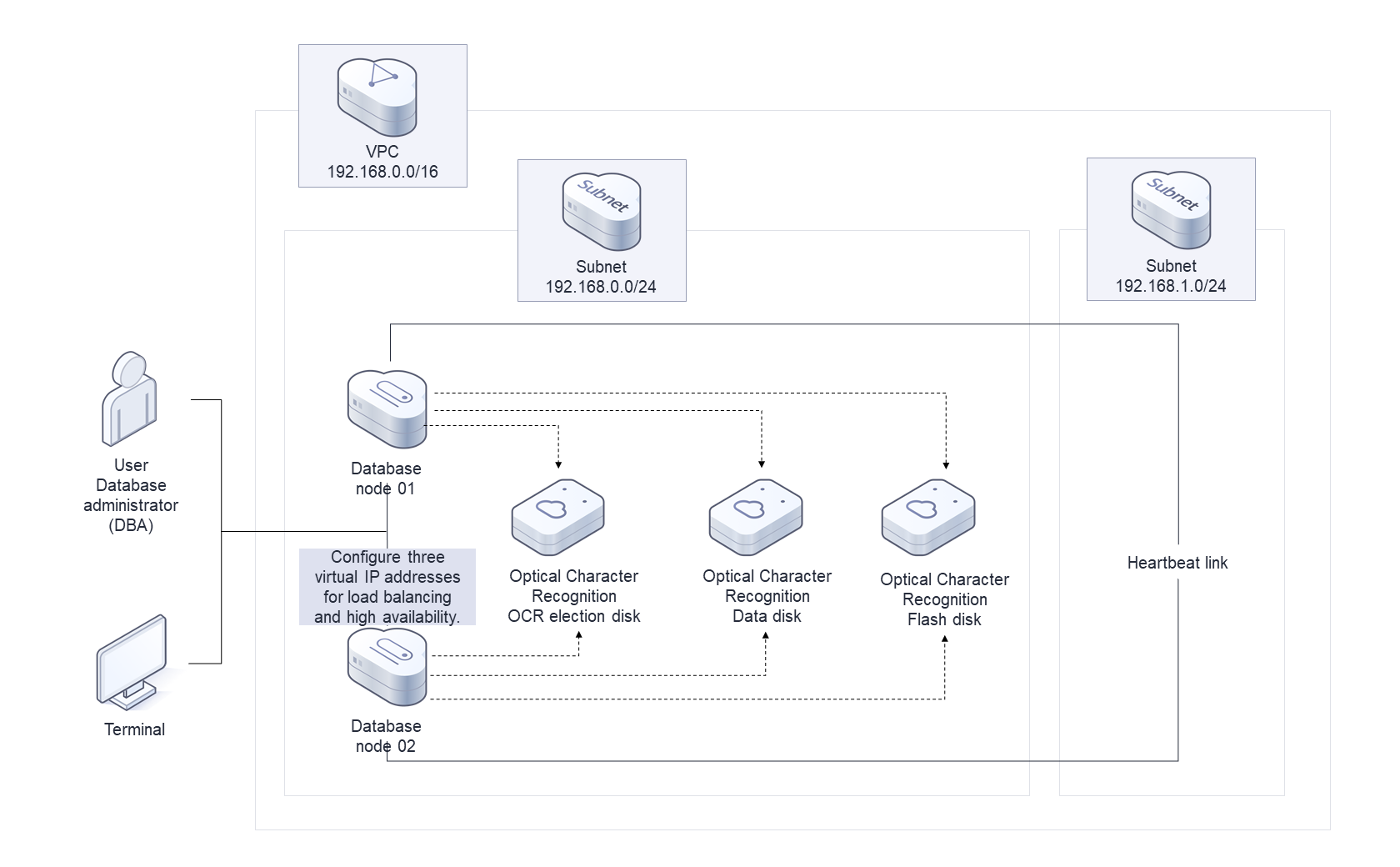Solution Overview
Scenarios
This solution enables you to easily deploy the basic environment for your core database. It helps speed up your digital transformation and provides a highly reliable and high-performance database. This solution can be used for migrating core database workloads to the cloud.
Architecture
This solution uses Elastic Cloud Server (ECS) and shared Elastic Volume Service (EVS) disks to provide secure and reliable compute, storage, and network resources for your core database. The following figure shows the deployment architecture.

This solution will:
- Create two ECSs for deploying database nodes.
- Attach two NICs to each ECS. One NIC is for public network communication and the other for private network communication.
- Create six shared SCSI EVS disks, three for OCR election, one for MGMTDB database, one for data disks, and the last one for flash disks.
- Attach the six shared SCSI EVS disks to the two database nodes.
- Create three virtual IP addresses and bind them to the two core database nodes.
Advantages
- Easy deployment
This solution helps you easily deploy a basic environment for your database and reduces the deployment period from two days to one hour.
Constraints
- Before deploying this solution, ensure that you have an account with access to the target region.
Feedback
Was this page helpful?
Provide feedbackThank you very much for your feedback. We will continue working to improve the documentation.See the reply and handling status in My Cloud VOC.
For any further questions, feel free to contact us through the chatbot.
Chatbot








